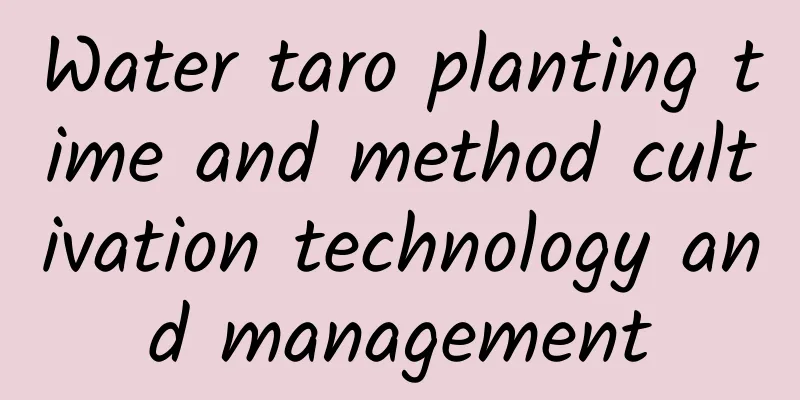How to grow peppers to get high yield?

|
Peppers are high in vitamin C and are not only an important vegetable in our daily diet, but also a key condiment to enhance the flavor of dishes. It is widely planted throughout our country and has significant economic benefits. However, low yield and poor quality are common problems. Let’s learn together how to grow peppers to achieve high yields. 1. Select strong seedlings for planting Pepper planting requires seedling raising before transplanting. After transplanting, the strong seedlings have a high survival rate, fast seedling establishment, and strong resistance to adversity, which helps to improve yield and quality. When raising seedlings, you should cultivate strong seedlings, and choose healthy seedlings when purchasing. It takes 50 to 70 days to raise seedlings in spring, and the seedlings have 7 to 8 true leaves; it takes 30 days to raise seedlings in summer, and the seedlings have 5 to 7 true leaves. The characteristics of strong seedlings are upright plants, stretched leaves, green leaves, thick stems, well-developed root systems, freedom from diseases and pests, and the first inflorescence has buds. The key to cultivating strong seedlings is to take advantage of low temperatures. Open-air seedlings should be sown when the temperature is stable above 15℃. Soak the seeds for 8 hours, wrap them with wet cloth to germinate, and sow them when 70% of the seeds are white. Rake the soil flat and fine, cover it with 0.5 to 1.0 cm of soil after sowing, water the seedbed thoroughly, and cover it with straw or film to retain moisture at low temperatures. Remove the covering material in time after emergence. Water the seedlings once every 5 days during the seedling stage. Weak seedlings can be watered with 0.5% urea solution. 2. Avoid excessive nitrogen fertilizer application Peppers like potassium and should avoid excessive nitrogen fertilizer. Excessive application of nitrogen fertilizer will cause the plant to grow too tall, delay flowering, cause flowers and fruits to fall, reduce yield, easily induce insect pests, and reduce the spiciness. Apply fertilizer reasonably and apply sufficient base fertilizer when planting, mainly farmyard manure, 3,000 kg of decomposed farmyard manure and 40 kg of triple compound fertilizer per mu. Ten days after planting, weak seedlings can be topdressed with 5 to 7 kg of urea or diluted manure water. 3. Spray "potassium dihydrogen phosphate + brassinolide" after pepper fruit setting After the peppers set fruit, apply 20 kg of triple compound fertilizer per mu. Spraying "potassium dihydrogen phosphate + brassinolide" foliar fertilizer once every 10 days for 2 to 3 times can increase the yield by 30% to 60%. Potassium dihydrogen phosphate promotes carbohydrate synthesis, improves quality, and enhances resistance to lodging and diseases and pests. Brassinolide improves photosynthesis efficiency, promotes root development, enhances stress resistance, protects flowers and fruits, coordinates nutritional balance, breaks apical dominance, delays leaf aging, and improves quality. 4. Avoid root damage during tillage The root system of peppers is shallow, underdeveloped, and has poor regeneration ability. Avoid damaging the roots during intertillage. The first intertillage should be done 10 days after transplanting. It should be shallow near the root system and slightly deeper far away. Intertillage should be carried out when the soil is dry to avoid soil compaction and root infection. 5. Pruning and branch cutting During the growth of pepper plants, retain 3 to 4 strong main branches, and each main branch retain 2 to 3 side branches. The remaining fruitless branches, overly dense branches, and leggy branches should be cut off. The branches below the main pepper should be removed as soon as possible, and the diseased leaves, old leaves, yellow leaves, and diseased fruits at the bottom should be removed. Reasonable pruning and branching can reduce nutrient waste, improve ventilation and light transmission, and increase yield. 6. Harvest as early as possible For peppers, mainly green peppers, they should be harvested as soon as possible after the fruits are ripe, so as to save nutrients, delay premature aging of the plants and increase yield. To sum up, pepper is widely cultivated in various parts of my country, with high nutritional value and good economic benefits. The yield and quality of peppers can be significantly improved by cultivating strong seedlings, applying fertilizers reasonably, tilling the soil, and pruning.
|
<<: How many days does it take for vegetables to sprout?
>>: How many days does it take for coriander to sprout?
Recommend
How to fertilize radish?
Radish is a crop that requires a lot of fertilize...
How much is the yield per mu of white mulberry?
Yield per mu of white mulberry planted White mulb...
When is the best time to prune sugar apple?
Sugar Apple Pruning When the sugar apple grows na...
How to breed white jade tiger skin orchid and precautions
How to reproduce white tiger lily There are two w...
How many kilograms of oranges are produced per mu?
Orange yield per mu Under normal circumstances, a...
Put these flowers in your living room to bring prosperity, wealth and a successful career!
Clivia Mainly small potted plants Ornamental valu...
Which plant blooms before it leaves?
1. Forsythia It does not have very high requireme...
I have 5 or 6 pots of green radish, and I cut off the small whiskers every time they appear. It turns out I was doing it wrong.
The pot of green ivy in Huahua's home is plac...
How to grow chocolate bricks and what to pay attention to
Chocolate brick is a plant of the Crassulaceae fa...
How much is a pound of wild golden thread lotus, how much is a pound of golden thread lotus seeds
1. Wild price Relatively speaking, wild golden th...
How to make carnation tea
1. Benefits of this drink Its efficacy and effect...
How to deal with peach blossom pests and diseases, symptoms of peach blossom pests
1. Brown rot Brown rot is a common disease of pea...
What kind of flower pot looks good with money string
What flower pots look good with money string The ...
How to grow pansy orchids
1. Soil To grow pansy orchids, you need to use lo...
Where is the best place to grow cherries?
Cherry growing area Cherries generally grow in pl...









